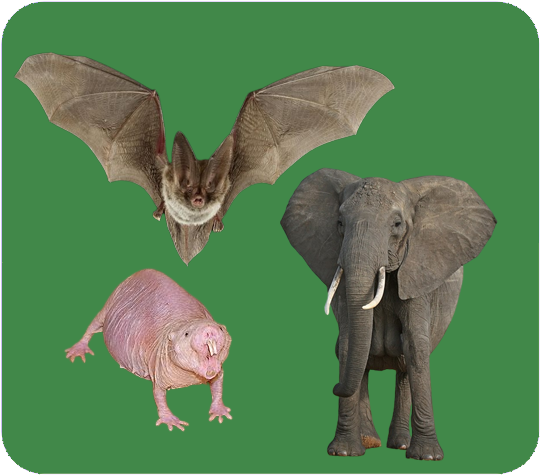Cancer
Cancer is an umbrella term for a variety of diseases that stem from uncontrolled cell proliferation. Cancer is an inevitable consequence of multicellular life. Since cells are independent biological entities that are subject to the mechanisms of evolution in the same way organisms are, under certain conditions, individual cells may begin to proliferate into a tumor, even though it is costly for the whole organism. The cases below examine cancer through the lens of evolutionary medicine.
- Eco-Evolutionary Perspectives
- Cell & Genetics Perspectives
- Somatic selection shapes malignancies
- Ecological principles explain how cancers interact with microenvironments
- Behavioral ecological principles explain competition and cooperation among cancer clones
- Natural selection explains why cancer is rare
- Evolutionary medicine explains why cancer is common
- Self-sustained proliferation
- Ignoring signals to stop replication and to self-destruct
- Renewing telomeres
- Disrupt metabolism and hoard resources
- Evading immune system
- Invading and spreading around body
- Growing a blood supply and triggering inflammation
Breast Cancer
Approximately 1 in 8 women will have a diagnosis of breast cancer over their lifetime. This case looks at what makes breast tissue so susceptible to cancer and examines particular risks, both environmental and genetic, that contribute to this high incidence. Breast epithelial cells receive growth signals via hormones as part of a normal menstrual cycle. Compared to cells in other tissues, they reproduce at a relatively high rate. This permits somatic mutations in breast tissue cells to occur and accumulate at a high rate, leaving breast tissue prone to cancer. Some germ line (inherited) mutations also contribute to the onset of breast cancer. The persistence of these mutations can potentially be explained as an evolutionary trade-off or via founder effects. In other cases, the onset of breast cancer can be explained by exposure to environmental factors, such as modern diets, cigarettes, and changes in reproductive patterns.
This case will introduce the mechanistic and evolutionary underpinnings of breast cancer. It will also explore how an evolutionary perspective can be utilized to improve the treatment of some cases of breast cancer.

Cancer Across the Tree of Life
Cancer is ubiquitous across the tree of life in multicellular organisms. This is because multicellular organisms are composed of complex cellular societies that require intricate coordination and cooperation in order to sustain their host organism. Cancer occurs when this coordination breaks down, and a lineage of proliferating cells ceases cooperation with the rest of the body by ignoring signals to stop dividing and to cheat programmed death. Since cells are independent biological entities that are subject to the mechanisms of evolution in the same way organisms are, understanding the evolution of cancer requires an analysis at two levels of biological organization: the cell and the organism.
This case examines the universal features of cancer across the multicellular tree of life and explores the evolutionary mechanisms that shape cancer risk within mammals at both the organismal and cellular level.

